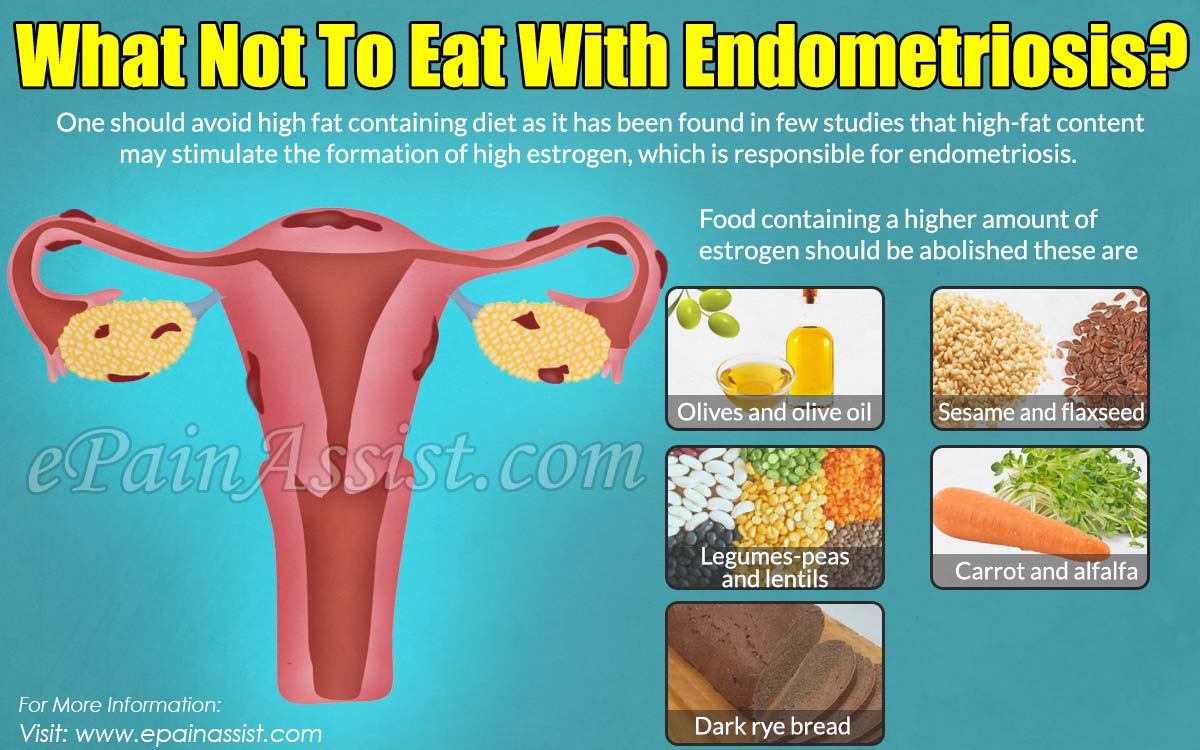Before knowing what not to eat in endometriosis one should know what is endometriosis? So the question arises what is endometriosis?
Endometriosis is defined as the presence of ectopic benign tissue outside the cavity of the uterus that may be the fallopian tube, ovary or peritoneal cavity. These ectopic mass are made of endometrial glands, which respond to hormones generated by the ovaries.
Various sites of endometriosis (based on the order of frequency usually observed) are as follow:
- Ovary
- Cul-de-sac
- Uterosacral ligament
- Broad ligament
- Fallopian tube
- Uterovesical fold
- Round ligament
- Vermiform appendix
- Vagina
- Rectovaginal septum
- Rectosigmoid colon
- Cecum
- Ilium
- Inguinal canal
- Abdominal scars
There are various categories of endometriosis which includes-
- Ovarian endometriosis
- Pelvic endometriosis
- Rectovaginal endometriosis
Classifications are put forward based on the appearance, size, ovarian implant and depth of peritoneal cavity involved and even includes the amount of obliteration of pouch of Douglas. Endometriosis is considered an important condition which must be treated in time to prevent infertility.
How Do We Know That Person Is Having Endometriosis? What Are The Symptoms Of Endometriosis?
Dysmenorrhea is the main and most common symptom. It usually occurs as peritoneal fluid contains prostaglandins, which are solely responsible for the pain. Pain can be of monotonous and dull type or it can be excruciating in nature. It may even radiate to the sciatic nerve thus causing further problems.
- Dyspareunia may occur due to adhesion of uterus and thickening of uterosacral ligament. This is also considered as a cause of infertility as the woman is reluctant to do intercourse.
- Endometriosis is responsible for infertility in many people. The reason being simple, it affects the tubal motility and thus implantation cannot take place.
- Abdominal pain is another complaint which usually occurs at the time of menstruation. It may cause slight to severe pain. It varies from person to person.
- Menorrhagia is even associated with endometriosis.
- Pelvic pain which occurs due to the presence of prostaglandins E in the peritoneal fluid is also a symptom.
Urological signs are even encountered such as dysuria and hematuria during menstruation. At times bowel is even involved leading to painful defecation. Thus endometriosis may present with varying symptoms.

What Not To Eat With Endometriosis?
Now the question is what should be avoided in endometriosis? One should avoid high fat containing diet as it has been found in few studies that high-fat content may stimulate the formation of high estrogen, which is responsible for endometriosis. Thus, a women should take proper diet as it is has been clearly established that there is an association between diet and endometriosis, so lifestyle modification should be taken.
Few studies even suggest that casein containing products contains artificial estrogen; therefore, dairy products should be avoided so as to prevent the disease.
Red meat which contains hormones should be avoided so as to avoid excessive estrogen exposure.
Alcohol affects the metabolism of estrogen, thus it should be avoided in endometriosis. So, women should restrict herself from consuming alcohol as it is slowly metabolized in women’s body.
It has been found that soy food contains little amount of estrogen so better avoid such food items.
Women should start consuming food containing omega-fatty acids and it is considered that consuming antioxidants in your diet may even reduce the chances of having endometriosis. So, one should consume a lot of citrus fruits but still, this is a contradicting fact as few researchers believe that oranges are rich in estrogen.
Licorice extracts have been found beneficial in inflammatory disorders, so plan your diet and include everything which is healthy for you.
Food containing a higher amount of estrogen should be abolished these are:
- Olives and olive oil
- Sesame and flaxseed
- Legumes-peas and lentils
- Carrot and alfalfa
- Dark rye bread
Gluten-containing food should be avoided. Wheat contains gluten thus should be avoided in a patient with endometriosis and celiac disease.
Fibrous food and iron-rich food should be consumed. Zinc and vitamin A, C and E should be consumed in good quantity as they reduce the chance of endometriosis as per few studies.
Education is the key to health so every woman should be taught regarding a healthy lifestyle. Eat healthy, stay healthy.
Also Read:
- Endometriosis: Causes, Signs, Symptoms, Treatment
- Adenomyosis Vs Endometriosis: Differences Worth Knowing
- Is Endometriosis an Autoimmune Disease?|Endometriosis Increases the Risk of Cancer & Other Cardiovascular Conditions?
- How Does Mirena Help Treat Endometriosis?
- Can Endometriosis Go Away On It’s Own?
- What Will Happen If Endometriosis Is Not Treated?
